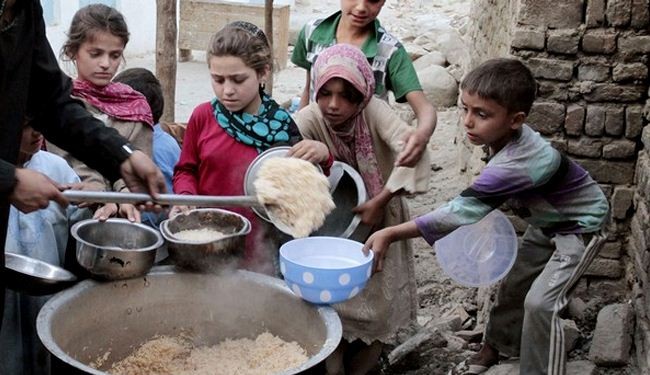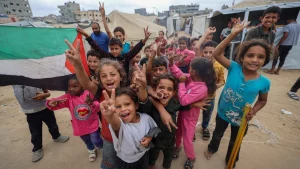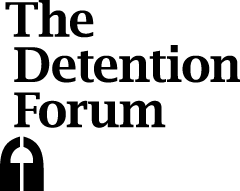
In a time of distressing headlines, and searing images of distraught people in brutal warzones facing death, displacement or diminishing prospects of survival, the situation of Afghans is often dismissed, ignored or forgotten. Indeed, their suffering, after four-plus decades of armed conflict, occupation and corrupt governance, is routinely misrepresented.
There is little acknowledgement of the longstanding reasons for the abysmal situation of millions of impoverished Afghans whose numbers, already in 2020, were set to increase “from 55% to 72% of the population” given prolonged warfare, economic contraction, structural inequalities and corruption. Thus, while the sound of gunfire has largely receded from Afghan valleys and cities, economic warfare, associated with the seizure of the country’s sovereign external reserves by the US and some European allies – assets that are vital for a functioning economy and trusted banking system – deepens poverty and deprivation.
On the occasion of the 4th anniversary of the mid-August 2021 return of the Taliban to Kabul, poverty in Afghanistan is no less a debilitating scourge than before. According to the UN Development Programme (UNDP), economic shocks in 2024 “affected 90 percent of Afghan households.” UNDP also noted recently that “nine in ten households reported cutting back on basic needs” while many have been obliged to reduce food intake. Indeed, a recent UNICEF report on child poverty indicates that “3.5 million young children suffer from wasting” with a high proportion at risk of death. The World Food Programme (WFP) warned last month that some 10 million Afghans could face hunger this summer.
Deepening precarity is exacerbated by the coerced returns of Afghans from neighbouring countries which have hosted millions for decades. According to Volker Türk, the UN High Commissioner for Human Rights, over 1.9 million Afghans have been pushed or otherwise obliged to leave Iran and Pakistan in recent months. In July, Germany deported dozens of Afghan nationals in the context of its tougher migration policy.
NATO members that have waged war in Afghanistan cut all development funding in 2021. They have, now, abruptly cut financial support for humanitarian programmes despite the increased scale of humanitarian need this year. The US, which provided 45% of humanitarian funding in 2024, has slashed its support with dramatic consequences for women and others dependent on food, maternal health care, hygiene and other support for survival. The UK, Germany, Holland, Sweden and Belgium have also cut their humanitarian funding.
Such policymaking illustrates a profound lack of coherence and the absence of an ethical framework in foreign policy decision-making; this has had major repercussions for Afghans, both in the past and now. It illustrates utter contempt for the lives and well-being of the Afghan people and their society. Contempt and incoherence can be traced to high profile and sustained rhetoric by various Governments on the importance of respecting the human rights of Afghan women and girls while, at the same time, ignoring that their policies have deleterious effects, especially for females that are further marginalized and disadvantaged by poverty.
End Collective Punishment
No less an authority than the US government’s Special Inspector General for Afghanistan Reconstruction (SIGAR) latest report, issued in July, found that Afghanistan “suffers from a liquidity crisis due to its isolation from the international banking sector and its central bank’s – Da Afghanistan Bank (DAB) – inability to print new, or replace existing, afghani bank notes.”
Sanctions on the DAB, since February 2022, not only cratered the economy but continue to punish the poor. The Central Bank is widely seen to have done a credible job in upholding the value of the afghani, the local currency, thereby inhibiting inflationary forces and maintaining the population’s access to bread and other fundamentals. However, the DAB is prevented from organizing a print order to replace the much-degraded, existing afghani bank notes, currently held together with sellotape and, increasingly, not accepted by shopkeepers and others. This is a critical problem for most Afghans who operate in a heavily cash-dependent environment.
The only sustainable answer to woeful levels of poverty, hunger and limited access to health care and livelihoods is to develop a functioning economy. This points to the obvious and urgent need to recapitalize the DAB, that concurs with a USAID assessment to strengthen its in-house capabilities in terms of anti-money laundering (AML) and combating the financing of terrorism (CFT). Such re-capitalization can be done, in stages, with international third-party monitoring.
It is also an imperative that means are identified to re-print much needed Afghanis. One potential option is for the Afghan Fund in Switzerland to use accrued interest on the US$3.5 billion of Afghan external reserves that were shipped to Berne by the Biden Administration in September 2022 for safekeeping and disbursement “for the benefit of the Afghan people.”
The not-for-profit Fund, managed by four Trustees with the help of a Secretariat has, apparently, been preoccupied with internal administrative matters since then. Now is an opportune moment to deliver on its responsibilities. Mobilizing a print order for fresh afghani bank notes would be a relatively small task for the Fund but a hugely useful and helpful step for millions of impoverished Afghans.
UAI, long concerned about the devastating effects of economic warfare, reiterates the importance of releasing the assets of the Afghan people.
It also calls for people-centered, sustainable development and responsible decision-making geared to alleviating the imposed and inherited strictures that make life unlivable for many Afghans.
Discover more about UAI’s campaign by clicking here











